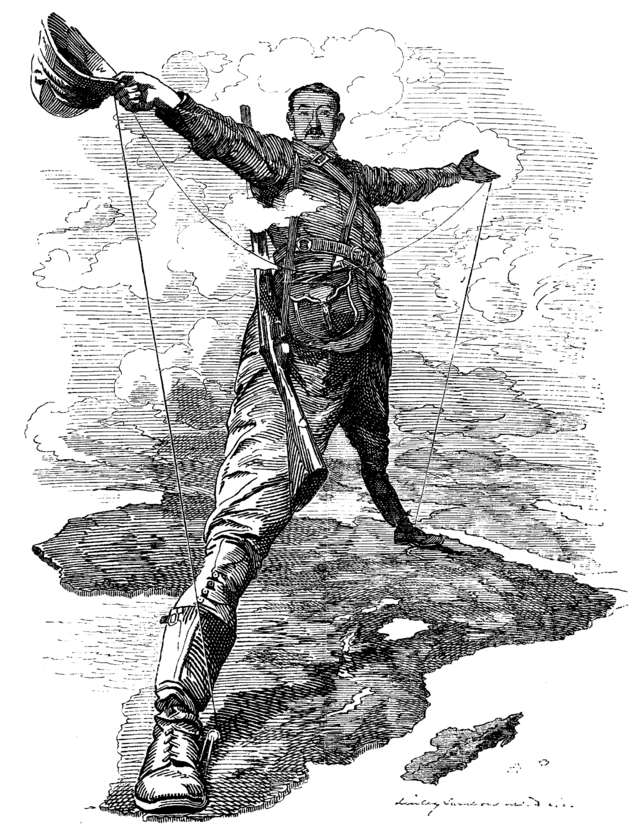
“Although Rejewski cracked the code for the first time in 1932, this was only the beginning of a series of Polish intelligence coups.”
By Eilidh McGinness
IT WAS 1928 when Germany first began using Enigma code machines. At the time, the electro-mechanical rotor cipher system was considered invincible. Even before the Nazis took power in 1933, British, French and Polish secret services grew ever more concerned by the number of coded intercepts from Germany that were indecipherable. Eventually, the British and French abandoned their decoding efforts out of sheer frustration, convinced that no one could crack this new Enigma code. Poland refused to give up. Sandwiched between an increasingly militarizing Germany in the West and the Soviets to the east, the country did not have that luxury.
So, Warsaw turned to a pair of agents in its top-secret cypher bureau to do what seemed to be the impossible – solve the riddle of the Enigma.
Lieutenant Colonel Karol Langor and Major Maksymilian Ciężki, turned to a team of mathematicians and set about training them in the art and science of cryptography. Up to that point, codebreakers tended to be linguists or even classicists.
Langor and Ciężki recruited directly from Poznan University. The school was situated in a section of Poland that until 1918 was still part of Germany; the local population spoke German fluently. Soon, 26 of the university’s best mathematics students were enrolled in a special top-secret codebreaking course. Only six completed the training. At the top of the class were Henryk Zygalski, Jerzy Rozycki and Marian Rejewski. All began working for the Biuro Szyfrów or Cypher Bureau in Warsaw in 1932.

Rejewski who had demonstrated a particular aptitude for code-breaking was tasked, on his own, in secret with solving Enigma. It took him just six weeks to crack it, despite the fact that there were literally trillions of possible coding settings for an Enigma machine.
To successfully decode a message, two machines constructed with the exact same internal wiring were needed and each had to be programmed with the same key settings and rotor positions.
Although Rejewski’s feat elevated him to the obscure mantle of greatest cryptologist of all time, he did have some resources to help guide him.
French intelligence had obtained a copies of Enigma instruction manuals and code books. These were provided to the Polish Cypher Bureau. Rejewski also claimed to know how to ‘think like a German,’ something he learned growing up in a part of Poland that was formerly part of the Fatherland. The 27-year-old mathematician also credited his knowledge of Permutations, which enabled him to develop equations to work out the internal wirings of the Enigma machine and from there methods of ascertaining the daily settings.

Although Rejewski cracked the code for the first time in 1932, this was only the beginning of a series of Polish intelligence coups. Using Rejewski’s instructions, the Warsaw electronics firm AVA began top-secretly producing components for copycat Enigma machines. The parts were assembled clandestinely at Cypher Bureau headquarters to ensure the utmost secrecy. Once constructed, the machines were used by the Polish codebreakers to decode German messages.
With the rise of the Nazis, the German military continued to adapt the Enigma system in order to preserve its invincibility. Poland’s Cypher Bureau continued to keep pace with every new development. Methods were even devised to accelerate the decoding work. Rejewski invented a cyclometer, a machine that was used to prepare a catalogue of the characteristics of each possible rotor setting. There were 17,576 possible settings for each of the six possible rotor orders.

Finally, Rejewski invented the Bombe machine, the first electro mechanical decrypting device. Consisting of six networked, Enigma terminals, the system could descramble the German daily code settings in under two hours.
By December 1938, the Germans introduced a next generation Enigma machine. The new models increased the number of interchangeable rotors from three to five, which meant that cracking the code would require a sizable increase in resources. The Cypher Bureau team was a small one with a limited budget.
Poland’s code team contacted its British and French counterparts seeking assistance, but upon discovering that the Western Allies had made no advances in breaking the Enigma on their own, Warsaw balked at revealing its top-secret breakthroughs. If German spies had moles in those friendly intelligence agencies, Berlin would soon learn of the Enigma system’s vulnerability and would switch to another code altogether.

But by the summer of 1939, war with Germany appeared inevitable and Warsaw had no choice but to share its knowledge of the Enigma code.
On July 26, just six weeks before the German invasion, Poland’s codebreakers revealed their Enigma work to French and British intelligence. The Allies were astounded by the Cypher Bureau’s progress.
Two weeks before the war, a fully-functional Enigma machine was personally delivered to Colonel Stewart Menzies, head of Britain’s MI6. The hand-off took place at the Victoria Railway Station in London.
 Two weeks later, Hitler’s Panzers were rolling into Poland. The Cypher Bureau, including Rejewski, packed up its entire operation and fled south into Romania, though it was not their end of the group’s work.
Two weeks later, Hitler’s Panzers were rolling into Poland. The Cypher Bureau, including Rejewski, packed up its entire operation and fled south into Romania, though it was not their end of the group’s work.
Inspired by Poland’s achievements, Britain’s Bletchely Park set out to recruit its own mathematicians for codebreaking. The rest is history.
Eilidh McGinness is the author of The Cypher Bureau. Born and raised in the Highlands of Scotland, she studied law at Aberdeen University and specialized in criminal defence for 12 years. She has always had a passion for history and is inspired in her writing by the extraordinary achievements of ordinary people. She lives in South West France. Visit her online at www.eilidhmcginness.com or follow her on Twitter @eilidhmcginness









